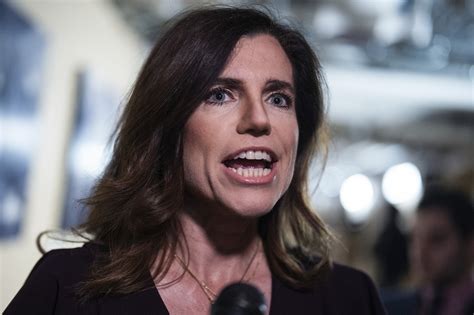
Southwest Airlines is implementing a stricter policy regarding the boarding process, specifically addressing the practice of “saving seats,” a move that has caught passengers and industry experts by surprise. The airline, known for its open seating policy, is now explicitly prohibiting passengers from holding seats for others who are not present during the boarding process, a change sparking debate about its impact on customer experience and operational efficiency.
Southwest Airlines, long celebrated for its unique boarding system that allows passengers to choose their seats upon boarding, is cracking down on a common practice: saving seats. The new policy, which has been rolled out with little fanfare, explicitly forbids passengers from holding seats for individuals who are not present during their boarding group’s turn. This departure from its traditionally lenient approach has generated considerable discussion among travelers and industry analysts alike, with some praising the move as a necessary step toward fairness and efficiency, while others lament its potential to disrupt the airline’s customer-friendly image.
The core of the issue lies in Southwest’s open seating policy, a cornerstone of its brand identity. Unlike most major airlines that assign specific seats at the time of booking, Southwest operates on a first-come, first-served basis within assigned boarding groups (A, B, and C). Passengers are assigned these groups based on factors like check-in time, frequent flyer status, and the purchase of upgraded boarding options. Historically, it has been a common, albeit unofficial, practice for early-boarding passengers to reserve seats for companions or family members who are boarding later. This practice, while seemingly convenient for groups traveling together, has often led to bottlenecks, confusion, and even confrontations on board, as later-boarding passengers find themselves unable to sit with their travel partners.
The new policy aims to address these issues directly. According to Southwest’s updated guidelines, “Passengers are not permitted to hold seats for other passengers who have not yet boarded.” The airline’s rationale is that this will ensure a smoother and more equitable boarding process for all passengers, preventing the frustration and delays caused by seat-saving.
The implementation of this policy change has not been without its critics. Some passengers argue that the ability to save seats is a crucial element of traveling with families or groups, particularly those with young children or individuals with disabilities. They contend that the policy unfairly penalizes those who, for various reasons, cannot board together. Others express concern that the policy will be difficult to enforce consistently, potentially leading to arbitrary or discriminatory application by flight attendants.
“This is a significant shift for Southwest, and it reflects a growing concern about customer satisfaction and operational efficiency,” says Henry Harteveldt, a travel industry analyst with Atmosphere Research Group. “While Southwest’s open seating policy has been a differentiator, it has also created challenges. The new seat-saving policy is an attempt to mitigate those challenges, but it also carries the risk of alienating some loyal customers.”
The potential ramifications of this policy change extend beyond individual passenger experiences. Southwest’s brand image, which has long been associated with friendliness, flexibility, and a relaxed atmosphere, could be affected. The airline must carefully manage the implementation of the policy to avoid creating a perception of being overly strict or inflexible.
Moreover, the policy could have implications for Southwest’s operational efficiency. By reducing the likelihood of boarding delays caused by seat-saving disputes, the airline may be able to improve its on-time performance and reduce turnaround times between flights. However, this benefit will only be realized if the policy is consistently enforced and if passengers largely comply with the new rules.
The success of the new policy will depend, in large part, on how Southwest communicates it to its passengers. Clear and consistent messaging is essential to ensure that passengers understand the rationale behind the change and are aware of the specific rules. The airline will also need to provide adequate training to its flight attendants, empowering them to enforce the policy fairly and effectively.
Furthermore, Southwest may need to consider alternative solutions to address the underlying concerns of passengers who rely on seat-saving. This could include offering enhanced boarding options for families or groups, providing designated seating areas for passengers with specific needs, or exploring technological solutions that allow passengers to indicate their seating preferences in advance.
The move by Southwest raises broader questions about the future of airline seating policies. As airlines grapple with increasing demand, rising costs, and growing passenger expectations, they are constantly seeking ways to optimize the boarding process and enhance customer satisfaction. The Southwest experiment with a stricter seat-saving policy will be closely watched by other airlines, as they consider whether to adopt similar measures.
For now, passengers traveling on Southwest should be aware of the new policy and be prepared to board without attempting to save seats for others. The airline’s willingness to adapt its long-standing practices underscores the dynamic nature of the airline industry and the ongoing need to balance customer expectations with operational realities. Only time will tell whether this policy will ultimately prove to be a successful step toward improving the passenger experience on Southwest Airlines.
Detailed Analysis and Background Information
Southwest Airlines’ open seating policy has been a defining characteristic since its inception. Founded in 1971, the airline initially aimed to disrupt the industry with a low-fare, high-frequency model focused on short-haul routes. The open seating concept was a key element of this strategy, designed to simplify the boarding process and reduce turnaround times. By eliminating the need for assigned seating, Southwest aimed to minimize delays and maximize aircraft utilization.
Over the years, the open seating policy has become deeply ingrained in Southwest’s brand identity. It has been marketed as a customer-friendly feature that gives passengers more control over their travel experience. Passengers appreciate the flexibility of choosing their own seats and the opportunity to sit with their travel companions.
However, the open seating policy has also presented challenges. As Southwest has grown into a major airline, the boarding process has become increasingly complex. The lack of assigned seats can lead to congestion and confusion, particularly on full flights. Passengers often engage in a “race” to secure the best seats, leading to stress and frustration.
The practice of saving seats has further exacerbated these problems. While not explicitly prohibited in the past, it has become a common practice for early-boarding passengers to reserve seats for others. This can create bottlenecks as passengers attempt to navigate around saved seats, and it can lead to conflicts between passengers who feel that the practice is unfair.
The new policy is an attempt to address these challenges and streamline the boarding process. By explicitly prohibiting seat-saving, Southwest hopes to create a more equitable and efficient boarding experience for all passengers. The airline believes that this will reduce delays, improve on-time performance, and enhance customer satisfaction.
However, the policy also carries risks. Some passengers may view it as a restriction on their freedom and flexibility. Others may find it difficult to comply with, particularly when traveling with families or groups. The key to success will be effective communication and consistent enforcement. Southwest must clearly communicate the rationale behind the policy and ensure that flight attendants are properly trained to enforce it fairly and consistently.
The policy change also raises questions about the future of airline seating policies. As airlines grapple with increasing demand and rising costs, they are constantly seeking ways to optimize the boarding process and enhance customer satisfaction. Some airlines are exploring dynamic pricing models that allow passengers to pay extra for preferred seats or early boarding. Others are experimenting with new boarding strategies that aim to reduce congestion and speed up the process.
Southwest’s experiment with a stricter seat-saving policy will be closely watched by other airlines. If it proves successful, it could pave the way for other airlines to adopt similar measures. However, if it leads to customer dissatisfaction or operational problems, it could serve as a cautionary tale.
The Human Element and Passenger Perspective
The new policy affects passengers in diverse ways, impacting families, groups, and individual travelers alike. Understanding these perspectives is crucial to assess the policy’s real-world impact.
-
Families Traveling with Young Children: For parents traveling with young children, the ability to sit together is paramount. The policy may force families to split up, potentially increasing stress and logistical challenges during the flight. Parents often rely on the ability to save seats to ensure that they can supervise their children and provide necessary assistance.
-
Groups Traveling Together: Groups of friends or colleagues often travel together for leisure or business. The policy could disrupt their ability to socialize and collaborate during the flight. Many groups value the opportunity to sit together, share experiences, and build camaraderie.
-
Passengers with Disabilities: Passengers with disabilities may require specific seating arrangements to accommodate their needs. The policy could make it more difficult for them to secure appropriate seating, potentially leading to discomfort or even safety concerns.
-
Elderly Passengers: Elderly passengers may also benefit from the ability to sit with companions who can provide assistance. The policy could make it more challenging for them to travel independently or with minimal support.
-
Solo Travelers: While the policy may seem neutral to solo travelers, it can still impact their experience. Solo travelers may appreciate the ability to choose their own seats and avoid being seated next to disruptive or inconsiderate passengers. The policy could make it more difficult for them to find desirable seating options.
Addressing Potential Concerns and Mitigation Strategies
To mitigate potential negative impacts, Southwest could explore several strategies:
-
Enhanced Boarding Options: Offer enhanced boarding options for families or groups, allowing them to board earlier and secure seats together. This could be offered as a paid upgrade or as a complimentary service for certain passengers.
-
Designated Seating Areas: Provide designated seating areas for passengers with specific needs, such as families with young children or passengers with disabilities. This would ensure that these passengers have access to appropriate seating arrangements.
-
Technological Solutions: Develop technological solutions that allow passengers to indicate their seating preferences in advance. This could include a seat selection tool or a system that matches passengers with similar interests or needs.
-
Flexible Enforcement: Train flight attendants to enforce the policy flexibly, taking into account the specific circumstances of each situation. This would allow them to make exceptions for passengers who have legitimate reasons for saving seats.
-
Open Communication: Maintain open communication with passengers, explaining the rationale behind the policy and addressing their concerns. This would help to build trust and understanding.
Broader Implications for the Airline Industry
Southwest’s decision to crack down on seat-saving could have broader implications for the airline industry. As airlines grapple with increasing demand and rising costs, they are constantly seeking ways to optimize the boarding process and enhance customer satisfaction.
If Southwest’s policy proves successful, it could pave the way for other airlines to adopt similar measures. However, if it leads to customer dissatisfaction or operational problems, it could serve as a cautionary tale.
The policy also raises questions about the future of airline seating policies. Some airlines are exploring dynamic pricing models that allow passengers to pay extra for preferred seats or early boarding. Others are experimenting with new boarding strategies that aim to reduce congestion and speed up the process.
Ultimately, the success of any seating policy depends on its ability to balance the needs of passengers with the operational realities of the airline industry. Airlines must carefully consider the potential impacts on customer satisfaction, efficiency, and profitability before implementing any major changes.
FAQ – Frequently Asked Questions
-
What is Southwest Airlines’ new policy on saving seats?
- The new policy explicitly prohibits passengers from holding seats for other passengers who are not present during their assigned boarding group’s boarding process. This means that passengers cannot reserve seats for companions or family members who have not yet boarded the plane.
-
Why is Southwest Airlines implementing this policy?
- Southwest aims to create a fairer and more efficient boarding process for all passengers. The airline believes that preventing seat-saving will reduce congestion, minimize boarding delays, and improve on-time performance. They are striving for equal opportunity for all customers to select their seat when it is their turn to board.
-
Does this policy apply to families traveling with young children?
- Yes, the policy applies to all passengers, including families traveling with young children. However, Southwest may offer enhanced boarding options or designate seating areas for families in the future to mitigate potential challenges. The airline has noted they will work with families and special circumstances on a case-by-case basis as they always have.
-
How will this policy be enforced?
- Flight attendants will be responsible for enforcing the policy. They will be trained to address situations where passengers are attempting to save seats for others. Enforcement will be flexible with common-sense exceptions for special needs passengers but seat saving in general will be prohibited.
-
What can passengers do if they want to sit with their travel companions?
- Passengers who want to sit together should check in early to secure better boarding positions. They can also consider purchasing upgraded boarding options that guarantee earlier boarding. Southwest is aware of the need to keep families together and will make reasonable accommodations, but saving multiple rows may not be possible anymore.
Impact on Southwest Rapid Rewards Members
The new seat-saving policy might have a nuanced impact on Southwest Rapid Rewards members, especially those with A-List or A-List Preferred status. These members typically enjoy priority boarding, which allows them to select their seats before the general boarding groups. However, the new policy means they can no longer save seats for companions who don’t have the same priority status and board later. This could potentially diminish some of the perceived value of their elite status, particularly for those who frequently travel with non-elite members.
To mitigate this, Southwest could consider offering a benefit that allows A-List and A-List Preferred members to designate one or two companions for priority boarding, regardless of their individual status. This would not only enhance the value of the Rapid Rewards program but also align with the airline’s commitment to customer service.
Operational Efficiency and Turnaround Times
One of the key drivers behind the new policy is to improve operational efficiency and reduce turnaround times. Southwest’s business model relies on high aircraft utilization, which means minimizing the time planes spend on the ground between flights. Boarding delays caused by seat-saving can significantly impact turnaround times, leading to flight delays and disruptions throughout the airline’s network.
By implementing a stricter seat-saving policy, Southwest aims to streamline the boarding process, reduce congestion in the aisles, and minimize conflicts between passengers. This could potentially lead to faster boarding times, improved on-time performance, and increased aircraft utilization. However, the success of this strategy depends on consistent enforcement and passenger compliance.
The Role of Technology and Innovation
Technology could play a crucial role in helping Southwest implement and manage the new seat-saving policy. For example, the airline could develop a mobile app feature that allows passengers to indicate their seating preferences or request to be seated near their travel companions. The app could then use algorithms to assign seats based on these preferences, taking into account factors such as boarding group, elite status, and seat availability.
Another technological solution could involve using sensors in the seats to detect whether they are occupied or reserved. This would allow flight attendants to quickly identify seats that are being held illegally and address the situation accordingly.
However, it’s important to note that technology is not a silver bullet. Any technological solution must be user-friendly, reliable, and accessible to all passengers, regardless of their technical expertise.
Legal Considerations and Passenger Rights
The new seat-saving policy also raises some legal considerations and questions about passenger rights. While airlines generally have the right to set their own policies regarding seating and boarding, they must ensure that these policies comply with all applicable laws and regulations.
For example, airlines cannot discriminate against passengers based on race, religion, gender, or disability. They must also provide reasonable accommodations for passengers with disabilities, including those who require specific seating arrangements.
In addition, airlines must clearly communicate their policies to passengers and provide them with adequate notice of any changes. Failure to do so could result in legal challenges or regulatory action.
Comparative Analysis: Other Airlines’ Seating Policies
To better understand the significance of Southwest’s new seat-saving policy, it’s helpful to compare it to the seating policies of other major airlines.
- United Airlines: United Airlines uses assigned seating on all of its flights. Passengers can select their seats at the time of booking or during online check-in. United also offers premium seating options, such as Economy Plus, which provide extra legroom and other amenities.
- Delta Air Lines: Delta Air Lines also uses assigned seating on all of its flights. Passengers can select their seats at the time of booking or during online check-in. Delta offers a variety of seating options, including Delta Comfort+, which provides extra legroom and priority boarding.
- American Airlines: American Airlines uses assigned seating on all of its flights. Passengers can select their seats at the time of booking or during online check-in. American offers Main Cabin Extra seating, which provides extra legroom and other amenities.
As these examples illustrate, most major airlines rely on assigned seating to manage the boarding process and allocate seats. Southwest’s open seating policy has always been a unique differentiator, but it has also created challenges. The new seat-saving policy is an attempt to address those challenges while preserving the airline’s unique brand identity.
The Future of Southwest’s Open Seating Policy
The long-term implications of the new seat-saving policy for Southwest’s open seating policy are uncertain. It’s possible that the policy could be a temporary measure designed to address specific operational challenges. Alternatively, it could be a first step toward a more fundamental shift in Southwest’s seating strategy.
Some industry analysts have speculated that Southwest may eventually move toward assigned seating, at least on some of its flights. This would allow the airline to better manage the boarding process and compete more effectively with other major airlines. However, such a move would likely be controversial, as it would represent a significant departure from Southwest’s traditional business model.
Ultimately, the future of Southwest’s open seating policy will depend on the airline’s ability to balance the needs of passengers with the demands of the airline industry. The new seat-saving policy is a test of that ability.
Passenger Feedback and Sentiment Analysis
Monitoring passenger feedback will be crucial in assessing the success of the new policy. Southwest should actively solicit feedback through surveys, social media, and other channels. Sentiment analysis can be used to identify common themes and concerns among passengers.
Negative feedback should be carefully analyzed to identify potential areas for improvement. Positive feedback should be used to reinforce successful strategies and build customer loyalty.
Contingency Planning and Adaptability
Southwest should develop contingency plans to address potential challenges that may arise from the new policy. For example, if the policy leads to increased customer dissatisfaction, the airline should be prepared to make adjustments or offer alternative solutions.
Adaptability is key to success in the airline industry. Southwest must be willing to learn from its experiences and adapt its strategies as needed.
Long-Term Brand Implications
The new seat-saving policy could have significant long-term implications for Southwest’s brand. The airline has always prided itself on being customer-friendly, flexible, and affordable. The policy could be seen as a departure from those values, potentially damaging Southwest’s brand image.
To mitigate this risk, Southwest must carefully communicate the rationale behind the policy and emphasize its commitment to customer service. The airline should also explore ways to enhance the passenger experience, such as offering improved in-flight entertainment or more comfortable seating.
Ultimately, the success of the new seat-saving policy will depend on Southwest’s ability to balance its operational needs with the needs of its passengers. If the airline can strike the right balance, it can preserve its unique brand identity while improving its efficiency and profitability.
The Impact on Flight Attendants
The implementation of the new policy places additional responsibility on flight attendants. They will be tasked with enforcing the policy, which could lead to confrontations with passengers who are unhappy with the changes. Southwest must provide flight attendants with adequate training and support to handle these situations effectively. Flight attendants will have discretion and a “common sense” approach in unique circumstances to allow for reasonable accommodations.
Moreover, the airline should solicit feedback from flight attendants on the effectiveness of the policy and make adjustments as needed. Flight attendants are on the front lines of customer service and can provide valuable insights into the passenger experience.









